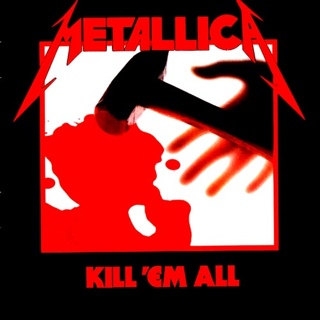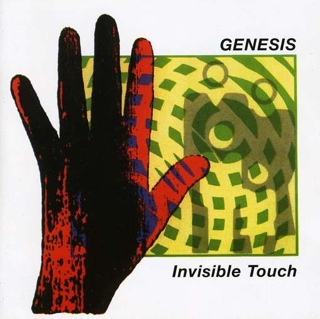![Lizard - King Crimson (CD - 43) music collectible [Barcode 633367050328] - Main Image 1](https://www.icollecteverything.com/images/music/main/126/1261902_1.jpg)
![Lizard - King Crimson (CD - 43) music collectible [Barcode 633367050328] - Main Image 2](https://www.icollecteverything.com/images/music/main/126/1261902_2.jpg)
![Lizard - King Crimson (CD - 43) music collectible [Barcode 633367050328] - Main Image 3](https://www.icollecteverything.com/images/music/main/126/1261902_3.jpg)
![Lizard - King Crimson (CD - 43) music collectible [Barcode 633367050328] - Main Image 4](https://www.icollecteverything.com/images/music/main/126/1261902_4.jpg)
Title:
Lizard
Description:
One of the pioneers of the progressive rock genre. The first official rehearsal of the band was on January 13, 1969. The first line-up comprised guitarist Robert Fripp, lyricist and lighting man Peter Sinfield (who “invented” the name of the band), composer and multi-instrumentalist Ian McDonald, bassist and vocalist Greg Lake, and drummer Michael Giles. They toured extensively and released the album In The Court Of The Crimson King (An Observation By King Crimson), a seminal piece of late ’60s music. Shortly afterwards, the band split to reform again suffering continuous personnel changes for a period of two and a half years (early 1970-mid 1972), releasing three more studio albums and one recorded live, with Robert Fripp as the only remaining member.
The new King Crimson that evolved in July 1972 (featuring ex-Yes drummer Bill Bruford, ex-Family (6) and later Asia (2) bassist/vocalist John Wetton and other more transitory members) marked a turn toward a heavier progressive sound, with experimental and fusion overtones, climaxing in unique semi-improvisatory live performances. This core line-up carried on until mid-1974, when Fripp broke up the band (as he thought) for good.
In mid-1981, after a full 7 years, a newly-formed band including Robert Fripp, with Adrian Belew on vocals and guitar, Tony Levin on bass and Chapman Stick, and Bill Bruford on acoustic and electronic drums, changed its name from Discipline to King Crimson. This line-up remained intact until summer 1984, releasing three studio albums.
Ten years later (May 1994), King Crimson started rehearsing again, this time as a ”double trio” including Pat Mastelotto on drums and percussion and Trey Gunn on Stick in addition to the 1980s line-up; it released two full albums and a handful of EPs through Fripp’s own Discipline Global Mobile label. A process of “fractalization” led to the creation of multiple spin-off groups containing three or four King Crimson members, dubbed ”ProjeKcts” One, Two, Three, Four, and X, which released live and studio sessions through DGM. Having regained the rights to the full King Crimson catalogue, DGM put out numerous other recordings from all periods of the band’s existence, including ”King Crimson Collectors’ Club” bi-monthly releases available only to members of the label’s website. In the hands of DGM, the King Crimson back catalogue (with most late additions available only on FLAC/MP3 format rather than on CD) grew enormously, making it one of the biggest for any rock group ever.
The new King Crimson that evolved in July 1972 (featuring ex-Yes drummer Bill Bruford, ex-Family (6) and later Asia (2) bassist/vocalist John Wetton and other more transitory members) marked a turn toward a heavier progressive sound, with experimental and fusion overtones, climaxing in unique semi-improvisatory live performances. This core line-up carried on until mid-1974, when Fripp broke up the band (as he thought) for good.
In mid-1981, after a full 7 years, a newly-formed band including Robert Fripp, with Adrian Belew on vocals and guitar, Tony Levin on bass and Chapman Stick, and Bill Bruford on acoustic and electronic drums, changed its name from Discipline to King Crimson. This line-up remained intact until summer 1984, releasing three studio albums.
Ten years later (May 1994), King Crimson started rehearsing again, this time as a ”double trio” including Pat Mastelotto on drums and percussion and Trey Gunn on Stick in addition to the 1980s line-up; it released two full albums and a handful of EPs through Fripp’s own Discipline Global Mobile label. A process of “fractalization” led to the creation of multiple spin-off groups containing three or four King Crimson members, dubbed ”ProjeKcts” One, Two, Three, Four, and X, which released live and studio sessions through DGM. Having regained the rights to the full King Crimson catalogue, DGM put out numerous other recordings from all periods of the band’s existence, including ”King Crimson Collectors’ Club” bi-monthly releases available only to members of the label’s website. In the hands of DGM, the King Crimson back catalogue (with most late additions available only on FLAC/MP3 format rather than on CD) grew enormously, making it one of the biggest for any rock group ever.
Band or Artist:
King Crimson
Release Year:
1970
Length:
43
Barcode:
633367050328
Country:
United Kingdom
Format:
CD
Speed:
N/A
Genre:
Progressive Rock
Show More
Subgenre:
Oldies
Catalog Number:
DGMCD0503
Producer:
Robert Fripp
Peter Sinfield
Robert Fripp And Peter Sinfield
Show More
AllMusic Rating:
nostar
Record Label:
Island
Show More
Recording Location:
UK
Number of Tracks:
5
Album Type:
Album
Quality:
N/A
Number of Discs:
1
Special Edition:
Yes
Packaging:
Jewel Case
Automatic Estimated Value:
~$25.24
Automatic Estimated Date:
2025-04-13
Date Added:
2018-06-28 16:31:51




